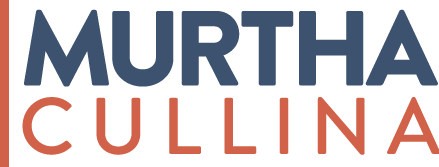December 31, 2020
On December 27, 2020, President Trump signed the Consolidated Appropriations Act 2021 (the “Act”) into law. The Act provides $900 billion in COVID-19-related stimulus and relief to individuals and businesses struggling from the challenges created or exacerbated by the coronavirus pandemic.
The following summary highlights the individual and business tax provisions included in the Act:
Individuals
- Eligible individuals will receive a $600 cash payment ($1,200 for married filing jointly) with an additional $600 cash payment
- for each dependent child age 16 or younger. The payments are phased out for single filers with adjusted gross income (AGI) between $75,000 - $99,000 (between $150,000 - $198,000 for married filing jointly). The individual’s 2019 tax return will be used to determine eligibility.
- The above-the-line deduction of up to $300 ($600 for married filing jointly) for cash contributions to qualifying charities and the suspension of the 60% adjusted gross income limitation on contributions to certain charities are extended through
- the year 2021.
- An additional $300/week in federal unemployment benefits (in addition to state-provided benefits) will be available through March 14, 2021 for weeks of unemployment after December 26, 2020 through March 14, 2021. In addition, the total number of weeks an individual may receive COVID-19-related unemployment benefits is extended from 39 to 50 weeks.
- The 7.5%-of-AGI “floor” on medical expense deductions, which was set to increase to 10% after the year 2020, is made
- permanent.
Businesses
- Paycheck Protection Program (“PPP”)
- An additional $284 billion will be available for PPP loans through March 31, 2021;
- Businesses and organizations that were not operating on February 15, 2020 are ineligible for PPP loans;
- Borrowers may deduct qualifying expenses paid with PPP loan proceeds;
- New applicants with fewer than 500 employees may borrow up to $2 million (reduction from $10 million
- under original PPP);
- Businesses with fewer than 300 employees may obtain a second PPP loan of up to $2 million provided they can demonstrate that they will or have spent the entire amount of their first PPP loan and suffered a 25%
- reduction in gross receipts during any 2020 calendar quarter as compared to the same calendar quarter in 2019;
- A simplified loan forgiveness process will be available to borrowers with PPP loans of $150,000 or less. For
- second draw PPP loans of $150,000 or less, borrowers need only (i) submit a certification attesting that they meet the 25% revenue loss requirement for the loan and (ii) produce documentation that they met the revenue loss standard to obtain forgiveness;
- IRC Section 501(c)(6) organizations, such as business leagues, chambers of commerce and boards of trade, are eligible for PPP loans provided they have fewer than 300 employees, do not receive more than 15% of receipts from lobbying activities, the lobbying activities do not comprise more than 15% of their total activities, and the cost of lobbying activities did not exceed $1 million during the most recent tax year that ended prior to February 15, 2020;
- Borrowers may choose the ending date of the PPP covered period between 8 and 24 weeks from the date the loan proceeds are received; and
- The categories of forgivable expenses for new and second draw PPP borrowers have been expanded to include (i) expenditures for business management software and cloud computing services, (ii) uninsured property damage or looting costs from public disturbances; (iii) certain supplier costs for goods that are essential to the operation of the borrower’s business, made pursuant to a contract, order, or purchase order in effect before the covered period of the loan or, for perishable goods, in effect before or during the covered period, and (iv) worker protection costs incurred to comply with federal and state COVID-19 safety requirements and guidelines.
- Economic Injury Disaster Loan advances are not required to be deducted from the PPP potential forgiveness amount.
- Business meals are fully (rather than 50%) deductible for the years 2021-2022.
- Employee Retention Tax Credit (ERTC) program is extended through June 30, 2021. For calendar quarters beginning after December 31, 2020, the scope of the ERTC is expanded to include (i) an increase in the amount of the ERTC to 70% (rather than 50%) of qualified wages paid to employees, (ii) permitting the ERTC to be used in conjunction with a PPP loan, so long as the credit is not used for wages paid with PPP funds, (iii) making the ERTC available to employers who have experienced a greater than 20% (reduced from 50%) reduction in gross receipts during a calendar quarter when compared to the same calendar quarter in the prior year, (iv) an increase in the limit on per-employee creditable wages from $10,000/year to $10,000/quarter, and (v) an expansion of the eligibility of the ERTC to businesses with 500 or fewer (increased from 100) employees.
- Refundable paid sick and family leave payroll tax credits available to employers who provide paid sick and family leave to employees for COVID-19 reasons are extended through March 2021.
- The repayment deadline for the employees’ share of Social Security tax (6.2%) that employers elected to defer is extended from April 30, 2021 to December 31, 2021.
If you have any questions regarding the Federal coronavirus stimulus package or how it might affect your business, please contact Marc T. Finer, Tax & Corporate Partner, at 860-240-6096 or mfiner@murthalaw.com.
![]() tax_business_a_summary_of_the_key_individual_and_business_tax_provisions_of_the_federal_coronavirus_stimulus_package.pdf
tax_business_a_summary_of_the_key_individual_and_business_tax_provisions_of_the_federal_coronavirus_stimulus_package.pdf

